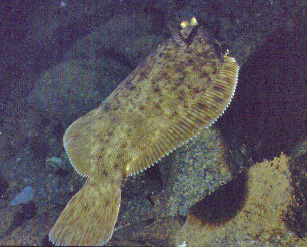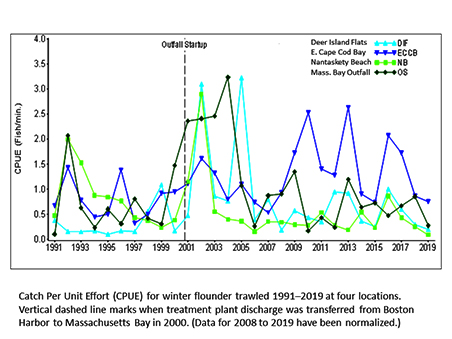|
Boston Harbor and Massachusetts Bay
MWRA Environmental Quality
Department
| Archive |
Winter Flounder
 |
There used to be a high prevalence of liver disease in flounder such as liver tumors and centrotubular hydropic vacuolation (CHV) in winter flounder from Boston Harbor in the late 1980s. In 1988, over 75% of flounder collected in Boston Harbor showed evidence of disease in liver tissue known to be associated with contaminant exposure, and 12% of the fish contained neoplasias (liver tumors), which also have a contaminant related etiology (Moore et al. 1996). The siting of MWRA’s Massachusetts Bay outfall caused concerns that flounder in Massachusetts Bay exposed to the treatment plant discharge might start to show health problems from exposure to the treated wastewater. Therefore, MWRA established a long-term monitoring program to provide data that can be used to track the health of winter flounder near the Bay outfall and in Boston Harbor.Flounder from four sites are sampled annually for length, weight, age, biological condition, and the presence of external or internal disease. Researchers also measure the concentrations of inorganic and organic contaminants in body tissues. The 2019 data represent the nineteenth consecutive year of flounder monitoring since the start-up of the Massachusetts Bay outfall in September 2000. Results have consistently shown no cause for concern about flounder health in the Harbor and Bay. |
See also:
Fish and Shellfish
Technical Reports
